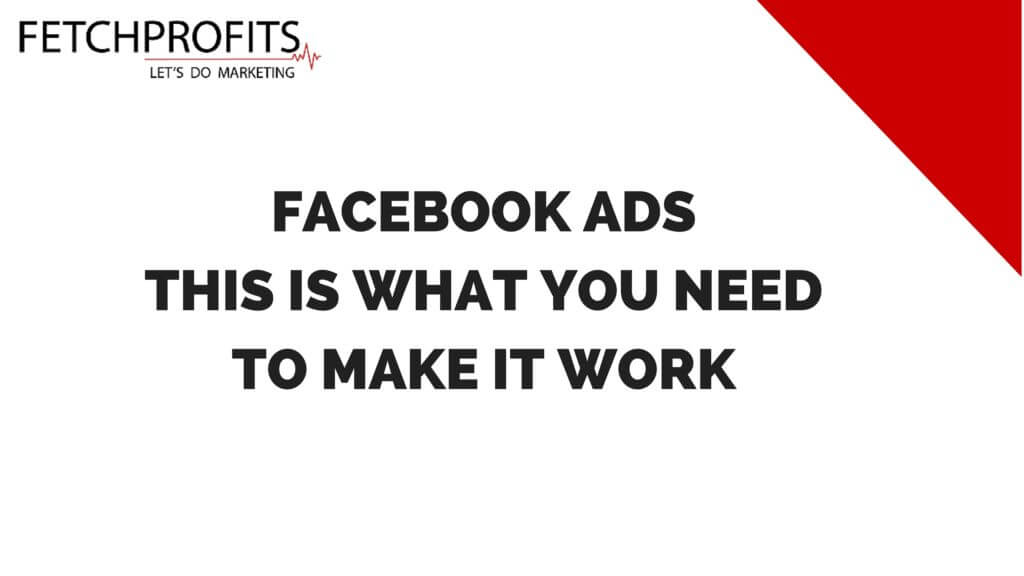Facebook is the newest, in-demand destination in town. Lately, there’s been a lot of action on the ad inventory side and Facebook has been trying to do what it can to compete in the extremely competitive ad land scape.
You can’t even put Facebook out of any kind of a media buying plan or off a set of marketing channels you’d consider. According to eMarketer
Facebook’s ad revenues grew 59.9% last year, to $3.13 billion. (Facebook combines Western Europe and certain countries in Eastern and Central Europe into one region for its revenue reporting, but it can be assumed that the bulk comes from countries that would be considered part of Western Europe.)
By comparison, ad revenues grew 66.6% in North America last year, to $5.29 billion, according to Facebook.
Facebook is a behemoth. It’s huge, and it’s growing while you are reading this. While it was originally assumed that Facebook best works for B2C companies, an increasing onslaught of B2B ads indicate just one thing: Everyone, entrepreneurs or not, is on Facebook. If they aren’t, they’ll soon be.
As such, your ad campaigns on Facebook work have this ever-increasing pressure to perform. Having worked with many clients before, here’s what I’ve come to realize:
The Basics: Put them all in Place
Rule #1: Start with at least one pair of ads (this is for testing).
Rule #2: Each of the ad variants should point to a matching landing page (I Know Oli Gardner is going to love this one)
Rule #3: There has to be a workflow (also called as a lead nurturing workflow) that takes your leads in, organizes contacts, triggers a lead nurturing sequence (email marketing or auto-responders).
Sales might or might not happen immediately. Your workflow, however, should immediately get into motion.
Employ A/B testing
Whether our clients understand it or not, or whether they appreciate it or not, all of our Facebook ad campaigns run with a major emphasis on testing.
We test everything — from target audiences to gender; from geographic locales to offers. Of course, we also test ads, landing pages, and more. We do this continuously (with as much data as possible).
Why, you ask?
Because you won’t know a thing until you test. You aren’t sure if your ad is the best you could ever have. You can’t take conversion rates for granted. Testing is the only way to inch towards champion ads, winning landing pages, and superior conversion rates.
Ad campaigns don’t work off a Silo
So, you’d setup your Business Account on Facebook, launch a couple of ads, and run your campaign laser-targeted to a geo. That’s nice, but your ad campaigns won’t work in a silo. Although Organic reach of Facebook updates is rapidly declining (for obvious reasons), you’d still need updates on your Facebook Business Page. This is where those precious lessons from Seth Godin on Why You Should build a Tribe kick in.
To start with, here are a few tips from Yoav Vilner of Social Media Examiner on how to build a community on Facebook.
Your ad campaigns (and your entire business) will need some kind of presence behind the ads. You’ll need context. You’d need more than just an ad to convince your customers.
You don’t have a community yet
If you thought you were on the right path to build a community, let’s take a reality check. See our own Facebook page here and you’ll realize that most people who “like” our page aren’t responsive at all. They just liked it, and they forgot about it.
As usual, the vanity metric of “Number of likes” won’t even matter for us. Jessica Malnik recently wrote for Convince and Convert on why Facebook pages truly aren’t real communities.
Jessica writes:
“After all, there’s X amount of likers, followers, subscribers, doers’, doubters, troublemakers and everything in between, who are communicating in the group. However with most brand pages, this environment is actually fostering a false sense of community.”
She further explains that most Facebook pages are one-sided conversations, and are hungry for engagement. Facebook users don’t interact much with the content, and more.
Build real communities. Do what you can to focus your efforts on solving problems for these communities.
Start with a small Budget
As with any kind of PPC Advertising (including others such as Quora Ads, LinkedIn Ads, and Google Ads), start your campaigns off on a small budget that you can afford to test with.
You’d need enough data (and the focus isn’t really on results, although that’ll happen too) to make your A/B testing work. Once you determine a working combination of targeting, ads,and landing pages, you can always scale up your campaigns later.
How are your Facebook ad campaigns going? Do share your experiences?


Trackbacks/Pingbacks